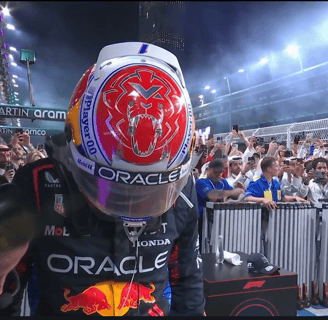How Much Do F1 Drivers Weigh?
Understanding the Rules & Impact. Learn about FIA weight rules, driver fitness, and why every kilogram matters in Formula 1.
Jay Vee, MD
2/9/20254 min read


How Much Do F1 Drivers Weigh?
When you look at an F1 driver, they may not seem as physically imposing as athletes from other high-performance sports. But their weight, fitness, and overall physique are finely tuned for one of the most demanding sports in the world. F1 drivers don’t just train for strength—they train for endurance, precision, and the ability to withstand extreme G-forces, dehydration, and mental strain over a two-hour race.
So, how much do F1 drivers actually weigh? And why does it matter so much in a sport where every gram counts? Let’s break it down.
What Is the Average Weight of an F1 Driver?
On average, most F1 drivers weigh between 60-75kg (132-165 lbs), but there are notable exceptions. The heaviest driver on the 2024 grid is Nico Hülkenberg at 78kg (171 lbs), while the lightest is Yuki Tsunoda at just 54kg (119 lbs). Despite this range, FIA regulations require all drivers to meet a minimum weight of 80kg (176 lbs) including safety gear, such as:
Race suit, gloves, and fireproof underwear
Helmet and HANS (Head and Neck Support) device
Seat and safety harness
If a driver naturally weighs less than 80kg, teams must add ballast to compensate. This is crucial because weight distribution affects car balance and performance. Teams strategically place ballast within the chassis to optimize handling without exceeding weight limits.
👉 Learn more about ballast and how it impacts car setup in our full guide on why F1 drivers get weighed.
Why Does Driver Weight Matter in Formula 1?
Weight plays a critical role in car balance, aerodynamics, and handling. Every kilogram in an F1 car affects:
✅ Acceleration & Speed – A lighter car is faster, but there are minimum limits for fairness.
✅ Tire Wear & Fuel Efficiency – Heavier cars put more strain on tires, affecting strategy.
✅ Weight Distribution – A driver’s weight influences the center of gravity, which can change how the car behaves in corners.
That’s why FIA regulations enforce strict weight limits—to prevent teams from using driver weight as an unfair advantage.
How Do F1 Drivers Maintain Their Weight?
F1 drivers must balance strength with agility while staying within weight restrictions. They need to be lean yet powerful to handle the extreme G-forces experienced in high-speed corners. Their training routines focus on:
High-protein diets to maintain lean muscle mass
Endurance workouts to handle extreme race conditions
Neck and core strengthening to withstand lateral and braking G-forces
Hydration strategies to prevent sudden weight fluctuations
Managing weight isn’t just about fitness—it’s a constant challenge throughout the season. Drivers can lose up to 4kg (9 lbs) during a single race, especially in high-heat events like Singapore.
I’ve seen what losing that much fluid in such a short time does to people. When I encounter patients who have dropped 4kg or more within hours, they’re often in a state of severe dehydration, requiring IV fluids, electrolyte replacement, and EKG monitoring for potential arrhythmias. I know that rapid fluid shifts can lead to dangerous drops in blood pressure, dizziness, and cognitive impairment—all things that could spell disaster behind the wheel of a 200mph race car.
Yet F1 drivers don’t just have to recover—they have to do it fast and race again within days. I can’t think of many other professions where extreme dehydration and weight loss are an expected part of the job, yet in F1, it’s just another factor teams must manage. I’ve always been fascinated by how these drivers push through physical exhaustion, time zone changes, and brutal back-to-back races, relying on precision hydration and recovery plans just as much as they rely on their engineers to fine-tune the car.
Why Do F1 Drivers Get Weighed After a Race?
After a race, drivers step on the scales for two key reasons:
1️⃣ To ensure FIA weight compliance – No driver or car can fall below the minimum limit.
2️⃣ To assess weight loss and recovery needs – Drivers lose a shocking amount of fluid during a race, which needs to be replenished ASAP.
👉 Want to learn more? Read: Why Do F1 Drivers Get Weighed?
TL;DR:
Weight in F1 isn’t just about hitting a number—it’s about performance, safety, and strategy. The 80kg rule ensures fair competition, while teams carefully manage weight distribution to optimize car handling.
So next time you see an F1 driver jump on the scale, remember—it’s not just a routine check. It’s a crucial part of racing science, where every kilogram could mean the difference between winning and losing.
Max Verstappen weighing in after the 2024 Saudi Arabian Grand Prix. (Source: F1TV)




Lando Norris rigorously training ahead of the 2019 Bahrain Grand Prix. (Source: Youtube - Lando Norris)


Charles Leclerc hydrating at the 2024 Monaco Grand Prix. (Source: F1TV)
SOCIALS
Follow us for more.
Subscribe to the newsletter
© 2024. All rights reserved.